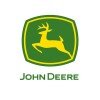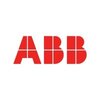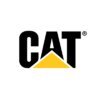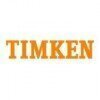


i
TÜV
SÜD
Work with us
![]()
Filter interviews by
TÜV SÜD Interview Questions and Answers
53 Interview questions
Learning attitudes shape how individuals approach knowledge, influencing motivation and engagement in various contexts.
Positive learning attitudes foster curiosity and resilience, leading to deeper understanding. For example, a student who embraces challenges is more likely to excel.
Negative attitudes can hinder progress; for instance, a student who believes they are 'bad at math' may avoid practice, limiting thei...
I have regularly used various instruments for testing fabric and leather, ensuring quality and durability standards are met.
Tensile Strength Tester: Measures the force required to break a fabric or leather sample.
Abrasion Tester: Assesses the wear resistance of materials by simulating friction.
Water Repellency Tester: Evaluates the water resistance of fabrics and leathers.
Colorfastness Tester: Tests how well a mat...
I have extensive experience in resolving customer complaints regarding product quality through effective communication and problem-solving.
Actively listen to customer concerns to fully understand the issue.
Investigated a complaint about a defective product by coordinating with the quality assurance team.
Implemented a feedback loop to ensure recurring issues are addressed and resolved.
Provided timely updates to cus...
To ensure accurate testing in fabric strength and colorfastness, follow standardized procedures and maintain equipment calibration.
Use standardized testing methods, such as ASTM or ISO protocols, to ensure consistency.
Calibrate testing equipment regularly to maintain accuracy; for example, using certified weights for tensile strength tests.
Conduct pre-tests on sample fabrics to identify any anomalies before full-s...
I have extensive experience in quality assurance within textile testing labs, ensuring compliance with industry standards.
Conducted regular inspections of raw materials to ensure they met quality specifications.
Implemented standardized testing procedures for fabric strength, colorfastness, and shrinkage.
Collaborated with production teams to address quality issues and improve processes.
Utilized statistical process ...
I ensure compliance with international testing standards through systematic documentation, regular audits, and continuous training.
Implement a centralized documentation system to track all testing protocols and results.
Conduct regular internal audits to ensure adherence to standards like ISO 17025.
Provide ongoing training for staff on international standards and compliance requirements.
Utilize software tools for r...
I resolved a discrepancy in test reports by conducting a thorough investigation and collaborating with the team to ensure accuracy.
Identified the discrepancy during a routine review of test reports.
Gathered all relevant data, including original test results and documentation.
Collaborated with the testing team to understand the testing process and identify potential errors.
Conducted a root cause analysis to determi...
I stay updated on testing standards through continuous learning, industry publications, and active participation in professional communities.
Subscribe to industry journals like 'Software Testing & Quality Engineering' for the latest research and trends.
Attend webinars and conferences such as the 'International Conference on Software Testing' to network and learn from experts.
Participate in online forums and co...
Effective negotiation skills are essential for managing vendor relationships and optimizing the purchase-to-pay process.
Communication Skills: Clear and concise communication helps in articulating needs and expectations. For example, discussing delivery timelines with vendors.
Active Listening: Understanding vendor concerns and feedback can lead to better agreements. For instance, listening to a vendor's pricing str...
Inventory management ensures optimal stock levels and efficient purchasing processes to meet demand and minimize costs.
Stock Control: Maintaining optimal inventory levels to prevent stockouts or overstock situations, e.g., using just-in-time (JIT) inventory.
Supplier Management: Establishing relationships with reliable suppliers to ensure timely delivery of goods, e.g., negotiating contracts for bulk purchases.
Dema...
TÜV SÜD Interview Experiences
75 interviews found
I applied via Referral and was interviewed in Dec 2020. There were 3 interview rounds.
Interview Questionnaire
2 Questions
- Q1. How you joint hdpe pipe and what time it takes to joint.
- Ans.
HDPE pipes are joined using various methods including butt fusion, electrofusion, and mechanical joining.
Butt fusion involves heating the ends of two pipes and then pressing them together to form a permanent joint.
Electrofusion uses a special fitting with embedded heating elements to melt the pipe ends together.
Mechanical joining methods include compression fittings, flange connections, and push-fit fittings.
The time i...
- Q2. Hydrotesting of OHRS
- Ans.
Hydrotesting is a process of testing the integrity of OHRS using water or other fluids under pressure.
OHRS stands for Offshore Helicopter Refuelling System
Hydrotesting is done to ensure that the system can withstand the required pressure and is free from leaks
The test involves filling the system with water or other fluids and pressurizing it to a certain level for a specified duration
During the test, any leaks or weakn...
Interview Preparation Tips
I appeared for an interview in Jun 2025, where I was asked the following questions.
- Q1. ,%of water absorption of bricks
- Ans.
Water absorption in bricks indicates their porosity and quality, typically ranging from 5% to 20%.
Bricks with lower water absorption (5-10%) are generally stronger and more durable.
High water absorption (15-20%) can indicate poor quality or excessive porosity.
For example, clay bricks usually absorb around 10-15% water.
Concrete bricks may have lower absorption rates, often below 5%.
- Q2. Maximum slump value for casting
- Ans.
The maximum slump value for casting typically ranges from 75 to 100 mm, depending on the application and mix design.
Slump test measures the workability of concrete.
A slump of 75-100 mm is ideal for structural elements.
Higher slump values (up to 150 mm) may be used for complex shapes.
Excessive slump (>150 mm) can lead to segregation of aggregates.
- Q3. Crossing strength of concrete
- Ans.
Crossing strength of concrete refers to its ability to withstand loads without failure, crucial for structural integrity.
Concrete's crossing strength is measured by its compressive strength, typically expressed in megapascals (MPa).
For example, a standard mix of concrete might have a compressive strength of 25 MPa, suitable for residential structures.
Factors affecting crossing strength include water-cement ratio, aggre...
- Q4. Sand and cement retio for brick masonry
- Ans.
The sand and cement ratio for brick masonry typically ranges from 1:4 to 1:6, depending on the strength required.
A common mix for brick masonry is 1 part cement to 5 parts sand (1:5) for general construction.
For stronger structures, a ratio of 1:4 may be used, especially in load-bearing walls.
In some cases, a 1:6 ratio is sufficient for non-load-bearing walls or decorative brickwork.
The choice of ratio also depends on ...
- Q5. Compressive strength of bricks
- Ans.
Compressive strength of bricks is a measure of their ability to withstand axial loads without failure.
Compressive strength is typically measured in megapascals (MPa).
Common bricks have a compressive strength ranging from 3.5 to 7.5 MPa.
Engineering bricks can have compressive strengths exceeding 20 MPa.
Testing involves applying load until failure, often using a universal testing machine.
Higher compressive strength indic...
- Q6. What is clear cover and effective cover
- Ans.
Clear cover is the distance from the surface of concrete to the reinforcement, while effective cover accounts for corrosion and other factors.
Clear cover is essential for protecting reinforcement from environmental factors.
Effective cover considers the actual depth of concrete after shrinkage and other factors.
For example, if the clear cover is specified as 25mm, the effective cover may be less due to concrete shrinkag...
- Q7. Sand cement aggregate retio for M20 gread concrete
- Ans.
M20 grade concrete typically uses a mix ratio of 1:1.5:3 for cement, sand, and aggregate respectively.
M20 concrete mix ratio: 1 part cement, 1.5 parts sand, 3 parts aggregate.
Total parts in M20 mix = 1 + 1.5 + 3 = 5.5.
For 1 cubic meter of M20 concrete, approximately 400 kg of cement, 600 kg of sand, and 1200 kg of aggregate are used.
Water-cement ratio is crucial; typically around 0.5 for M20 grade.
- Q8. Dimensions of modular brick
- Ans.
Modular bricks are standardized bricks used in construction, typically measuring 190mm x 90mm x 90mm.
Modular bricks are designed for easy handling and uniformity in construction.
Common dimensions include 190mm (length) x 90mm (width) x 90mm (height).
These dimensions allow for efficient stacking and alignment in walls.
Modular bricks can be used in various applications, such as residential and commercial buildings.
- Q9. What type of sand is used in plastering
- Ans.
Fine sand, typically river or manufactured sand, is used in plastering for a smooth finish and good adhesion.
Fine sand is preferred for plastering due to its small particle size.
River sand is commonly used as it is clean and free from impurities.
Manufactured sand can also be used, providing consistency in grading.
The sand should be well-graded to ensure a smooth application.
Avoid using coarse sand as it can lead to a r...
- Q10. No of bricks required for 1q m Wall
- Ans.
Calculating the number of bricks for a 1 square meter wall involves considering brick size and mortar thickness.
Standard brick size is typically 190mm x 90mm x 90mm.
Assuming mortar thickness of 10mm, the effective size becomes 200mm x 100mm.
Area of one brick with mortar = 0.2m x 0.1m = 0.02 sq.m.
Number of bricks per square meter = 1 sq.m. / 0.02 sq.m. = 50 bricks.
For a wall of 1 sq.m., approximately 50 bricks are neede...
Interview Preparation Tips
I applied via Company Website and was interviewed in Dec 2024. There were 2 interview rounds.
(5 Questions)
- Q1. What is the process for installing solar panels, and what are the methods to test their functionality?
- Ans.
The process for installing solar panels involves site assessment, mounting the panels, connecting to the electrical system, and testing functionality.
Site assessment to determine optimal location for maximum sunlight exposure
Mounting the panels securely on the roof or ground
Connecting the panels to the electrical system using inverters and wiring
Testing functionality through performance monitoring and inspection
- Q2. How much type quality test in solar system
- Ans.
Various types of quality tests are conducted in solar systems to ensure efficiency and reliability.
Quality tests for solar panels include performance testing, durability testing, and efficiency testing.
Other quality tests may involve checking for defects in materials, connections, and overall construction.
Regular maintenance and monitoring are also important quality control measures in solar systems.
- Q3. Installation teat
- Q4. Trench dept test
- Q5. Sand bedding test
Diploma in electrical engineering
Interview Preparation Tips
(2 Questions)
- Q1. Self introduction
- Q2. About previous experience
(2 Questions)
- Q1. Self introduction
- Q2. Previous experience & domain related
Interview Preparation Tips
I applied via Referral and was interviewed in Dec 2024. There were 2 interview rounds.
(2 Questions)
- Q1. What is your work experience, and what interests you about TÜV SÜD?
- Q2. What are your salary expectations?
(2 Questions)
- Q1. Can you provide a brief description of your work experience?
- Q2. How is sterilization and packaging validation reviewed from an auditor's perspective?
(2 Questions)
- Q1. Material specification, Details, drawings, code references.
- Q2. How to prepare welder qualification as per asme?
- Ans.
To prepare welder qualification as per ASME, follow ASME Section IX guidelines, conduct welder performance qualification tests, and maintain records.
Follow ASME Section IX guidelines for welder qualification
Conduct welder performance qualification tests such as visual examination, bend test, and radiographic testing
Maintain records of welder qualifications and requalification tests
Ensure welders are trained and certifi...
(1 Question)
- Q1. Variables, P No?
(1 Question)
- Q1. Salary expectation?
(2 Questions)
- Q1. What is cutting length in R/f bar..
- Ans.
Cutting length in R/f bar is the length of reinforcement required for bending and overlapping in a reinforced concrete structure.
Cutting length is calculated based on the shape and size of the structure where the reinforcement bars will be placed.
It includes the length required for bending the bars at corners and overlaps at joints.
Cutting length helps in determining the quantity of reinforcement bars needed for a spec...
- Q2. Slump test why is used
- Ans.
Slump test is used to measure the workability of concrete mix.
Determines the consistency and fluidity of concrete mix
Helps in ensuring the concrete is of the desired quality
Results can indicate if adjustments need to be made to the mix proportions
Commonly used in construction projects to assess the quality of concrete
(1 Question)
- Q1. Need minimum degree qualification in textile
(1 Question)
- Q1. How long travel with TUV SUD
- Ans.
My travel experience with TUV SUD has been extensive, focusing on various projects and client engagements across different regions.
Traveled to multiple countries for client audits, including Germany and the USA.
Participated in training sessions in Asia to enhance team skills.
Attended industry conferences in Europe to stay updated on regulations.
Interview Preparation Tips
I appeared for an interview in Apr 2025, where I was asked the following questions.
- Q1. In-depth Projects
- Q2. Questions regarding SQL, Data Processing , Previous Intenship questions
- Q3. Resume questions
I appeared for an interview in Mar 2025, where I was asked the following questions.
- Q1. Technical as per Designation
- Q2. Introduction , Technical, experience
I applied via Referral and was interviewed in Dec 2024. There was 1 interview round.
(1 Question)
- Q1. Related to Experience
Top trending discussions






TÜV SÜD Interview FAQs
Some of the top questions asked at the TÜV SÜD interview -
The duration of TÜV SÜD interview process can vary, but typically it takes about less than 2 weeks to complete.
Tell us how to improve this page.
TÜV SÜD Interviews By Designations
- TÜV SÜD Inspection Engineer Interview Questions
- TÜV SÜD Lead Auditor Interview Questions
- TÜV SÜD Quality Inspector Interview Questions
- TÜV SÜD Project Engineer Interview Questions
- TÜV SÜD Assistant Manager Interview Questions
- TÜV SÜD Team Lead Interview Questions
- TÜV SÜD Analyst Interview Questions
- TÜV SÜD Manager Interview Questions
- Show more
Interview Questions for Popular Designations
Overall Interview Experience Rating
based on 76 interview experiences
Difficulty level
Duration
Interview Questions from Similar Companies
TÜV SÜD Reviews and Ratings
based on 1.1k reviews
Rating in categories
|
Inspection Engineer
235
salaries
| ₹3.6 L/yr - ₹8.4 L/yr |
|
Assistant Manager
105
salaries
| ₹6 L/yr - ₹12.1 L/yr |
|
Lead Auditor
92
salaries
| ₹5.4 L/yr - ₹15 L/yr |
|
Field Engineer
82
salaries
| ₹1.9 L/yr - ₹5 L/yr |
|
Senior Analyst
80
salaries
| ₹3 L/yr - ₹6.6 L/yr |

John Deere

Cummins

ABB

CNH ( Case New Holland)
- Home >
- Interviews >
- TÜV SÜD Interview Questions










